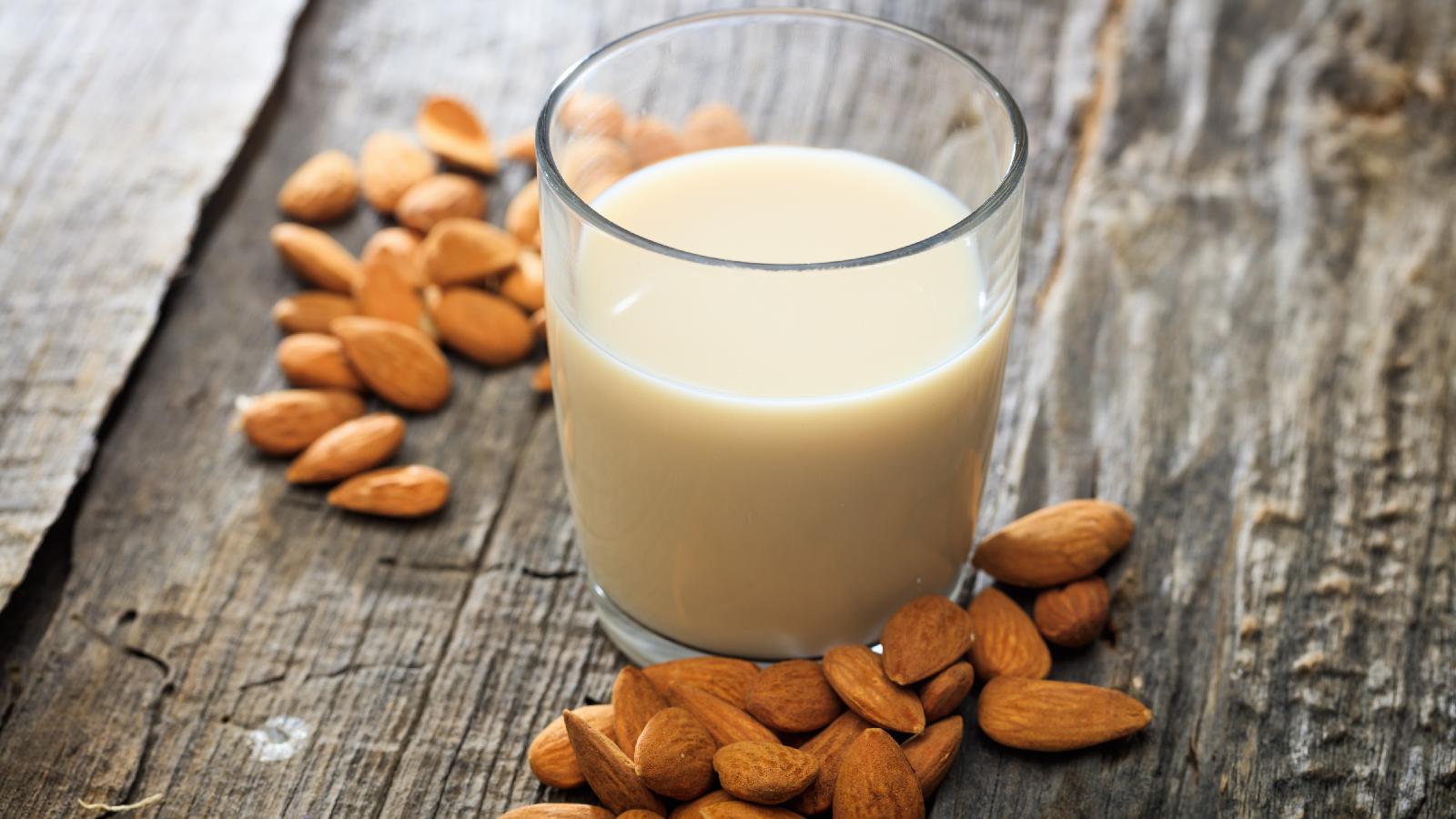
How to make almond milk at home?
8 months ago | 122 Views
Almond milk is one of the most healthy alternatives to dairy products. If you do not want to store-bought almond milk, why not make your own creamy, delicious almond milk at home? Making it is surprisingly simple and satisfying. It is an excellent choice for people who have dairy allergies or are lactose intolerant. It is also a good addition to your diet if you simply want a healthier, plant-based option. You will be surprised how simple it is to turn a handful of almonds into a delightful and healthful beverage that can be paired with a coffee latte, tea or even you can add to your dessert that can be used as an alternative for cow milk. Here’s how to make almond milk at home.
What is almond milk?
Almond milk is a popular plant-based milk made by blending almonds with water and straining the mixture. The resulting liquid is smooth and creamy with a slightly nutty flavour. It is often used as a substitute for cow milk in beverages, cereals, cooking, and baking. This milk is commonly fortified with vitamins and minerals such as calcium, vitamin D, and vitamin E to enhance its nutritional value, as found in a study published in the Agricultural and Biological Science. It is a suitable option for those who are lactose intolerant, allergic to dairy, or following a vegan diet.

How to make almond milk at home?
Here is a complete guide on how to make it at home, as explained by nutritionist Haripriya N.
Ingredients:
- 1 cup raw almonds
- 2-3 cups water (for soaking)
- 4 cups water (for blending)
- Optional: sweeteners (honey, maple syrup, dates), vanilla extract, a pinch of salt
Method:
1. Soak the almonds
Place 1 cup of raw almonds in a bowl and cover them with 2-3 cups of water. Let them soak overnight or for at least 8-12 hours. This softens the almonds, making them easier to blend.
2. Drain and rinse
After soaking, drain the almonds and rinse them thoroughly under cold water.
3. Blend
Add the soaked almonds and 4 cups of fresh water to a blender. Blend on high speed for 2-3 minutes until the mixture is smooth and creamy.
4. Strain
Place a nut milk bag, cheesecloth, or a fine-mesh strainer over a large bowl or pitcher. Pour the blended mixture through the strainer to separate the liquid (almond milk) from the almond pulp. Squeeze or press the pulp to extract as much milk as possible.
5. Flavour (optional)
If desired, you can add sweeteners like honey, maple syrup, or dates, along with a splash of vanilla extract and a pinch of salt. Blend again to mix the flavours.
6. Store
Transfer the it to a sealed container and refrigerate. It will stay fresh for 3-4 days. Shake well before each use, as it may separate over time.
Tips you can consider:
- The leftover almond pulp can be dried out and used in baking or as a topping for oatmeal or yoghurt.
- For a creamier texture, use less water when blending.
- Experiment with different flavours to add some variety.
Benefits of almond milk
1. Low in calories
Unsweetened almond milk is low in calories and fat, making it ideal for weight maintenance. It contains beneficial monounsaturated fats that can help lower harmful cholesterol levels. It is lower in calories than cow's milk, which makes it a good choice for those looking to reduce their calorie intake, as found in a study published in the Journal of Food Science and Technology.
2. Promotes heart health
Almonds contain monounsaturated fats, which has been linked to a lower heart disease risk. While almond milk contains lower amounts of these fats compared to whole almonds, it still contributes to heart health. Drinking it is highly recommended to reduce heart disease, as per a study published in the Food and Nutrition Sciences Journal.
3. Good for skin
Almond milk is a good source of vitamin E, as found in a study published in the Agricultural and Biological Science. This antioxidant helps protect cells from damage and supports skin health. So, if you are looking for an easy and effective way to get glowing skin, incorporating it into your daily routine can be helpful.
4. Helps in losing weight
According to a study published in the Food and Nutrition Sciences Journal, found that consuming almond milk decreases the mean weight and a consequent reduction of the body mass index over the 4 weeks period. In addition, the waist and hip circumference decreased substantially too.
5. Helps in digestion
“It is lactose-free and soy-free, making it a great choice for individuals with lactose intolerance or allergies to dairy and soy. It is often easier to digest than dairy milk,” explains the expert.

Side effects of almond milk
- Allergic reactions: People with nut allergies, particularly those allergic to almonds, may experience allergic reactions such as itching, swelling, and difficulty breathing.
- Thyroid issues: Almonds contain goitrogens, substances that can interfere with thyroid function, particularly in people with thyroid disorders. Consuming large amounts of almond milk may exacerbate these issues.
- Low protein content: It is significantly lower in protein compared to cow's milk. This can concern those who rely on milk as a primary protein source, such as growing children and athletes.
- Additives and sweeteners: Many commercial forms of milk contain added sugars, thickeners, and preservatives, which can contribute to health issues such as weight gain, digestive problems, and potential allergic reactions. It is important to read labels and choose unsweetened and minimally processed options.
- Nutrient deficiencies: While almond milk can be fortified with vitamins and minerals, it may still lack some of the nutrients found in cow's milk, such as certain proteins and vitamins. Relying solely on almond milk without a balanced diet can lead to nutrient deficiencies.
- Digestive issues: Some people may experience digestive discomfort, such as bloating or stomach cramps, from consuming almond milk, particularly if they have sensitivities to certain additives or preservatives.
Read Also: Frog pose: 6 benefits and how to do Mandukasana





















